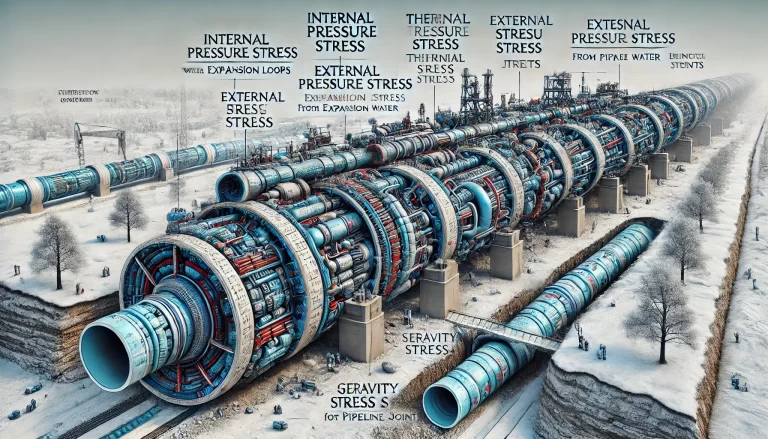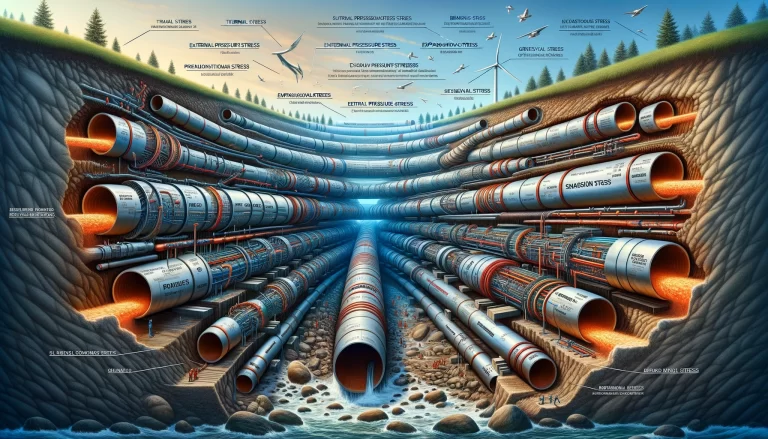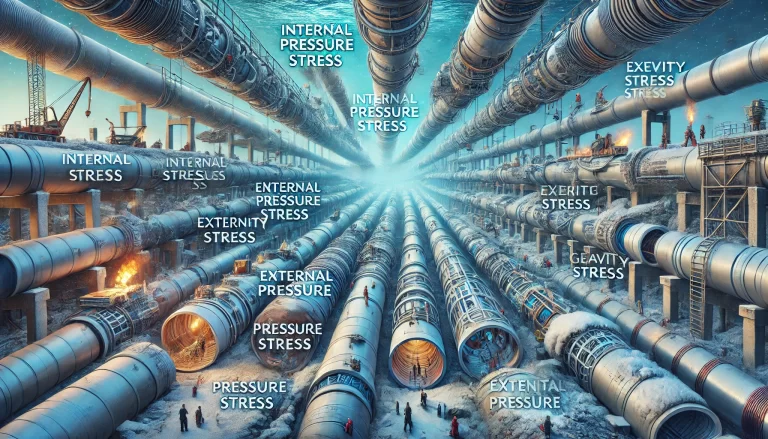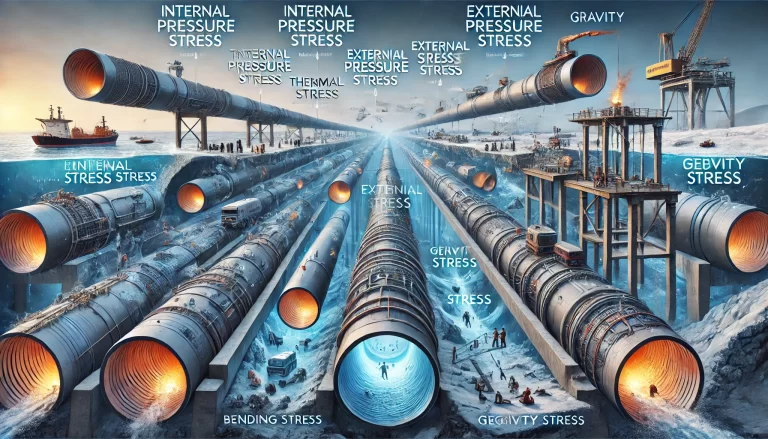Pipeline stress refers to the various forces and pressures that a pipeline experiences due to internal or external factors. It is a critical consideration in the design, construction, and operation of pipelines, directly impacting their safety, reliability, and longevity. Understanding and managing pipeline stress is essential for minimizing risks and ensuring system stability. This article delves into the types of pipeline stresses, their causes, and methods to address them.
Types and Sources of Pipeline Stress
1. Internal Pressure Stress
Internal pressure stress arises from the forces exerted by the fluid or gas inside the pipeline. This stress depends on the operating pressure and the diameter of the pipeline. High internal pressure can lead to hoop stress, which acts circumferentially and poses a risk of bursting if not properly accounted for during design.
Mitigation:
Employ materials with high tensile strength.
Design pipelines with appropriate wall thickness.
Use pressure relief systems to manage unexpected pressure surges.

2. Thermal Stress
Thermal stress results from temperature variations causing the pipeline material to expand or contract. Significant temperature changes, especially in pipelines transporting heated or cooled substances, can lead to deformation and stress concentration. Thermal stress is common during installation, operation, or shutdown phases.
Mitigation:
Implement expansion loops and joints to accommodate thermal movement.
Select materials with suitable thermal expansion coefficients.
Insulate pipelines to minimize temperature fluctuations.
3. External Pressure Stress
External pressure stress is caused by environmental factors such as soil or water exerting pressure on the pipeline. This type of stress is particularly relevant for buried pipelines, where changes in soil density, water levels, or geotechnical conditions can significantly affect stability.
Mitigation:
Conduct thorough geotechnical analysis during the planning phase.
Use protective coatings and encasements.
Adjust burial depth based on soil and water conditions.
4. Bending Stress
Bending stress occurs when a pipeline deviates from a straight path or is subjected to external loads such as vehicular traffic or heavy equipment. This stress can lead to deformation or failure if the pipeline’s material and design are inadequate.
Mitigation:
Ensure proper alignment and support during installation.
Use flexible materials in high-stress areas.
Conduct load analysis to identify critical points.

5. Gravity Stress
Gravity stress is caused by the weight of the pipeline itself and its contents. Vertical pipelines or pipelines spanning large distances without adequate support are particularly vulnerable to this type of stress.
Mitigation:
Design robust support systems.
Consider weight distribution during pipeline layout.
Regularly inspect and maintain support structures.
6. Segmental Stress
Segmental stress arises due to relative motion between different sections of a pipeline. Factors such as thermal expansion, ground movement, or improper installation can cause segmental stress, leading to fatigue or joint failure.
Mitigation:
Use flexible connections at joints.
Monitor for signs of movement or misalignment.
Install anchors to restrict unnecessary motion.

Addressing Pipeline Stress
To ensure the long-term safety and efficiency of pipeline systems, it is crucial to adopt a holistic approach to stress management. Here are some key strategies:
1. Comprehensive Design Analysis
Perform stress analysis using advanced tools such as finite element analysis (FEA) to identify potential weak points and optimize pipeline design.
2. Material Selection
Choose materials with properties suitable for the operating environment, such as corrosion resistance, tensile strength, and thermal stability.
3. Regular Monitoring and Maintenance
Implement a maintenance schedule that includes inspections for stress-related issues such as corrosion, deformation, or joint failure.
4. Emergency Planning
Develop contingency plans to handle unexpected failures caused by stress, such as rupture or leaks.
5. Training and Awareness
Train personnel in stress management best practices and the proper use of monitoring tools to detect early signs of stress-related problems.

Conclusion
Pipeline stress is a complex and multifaceted challenge that demands careful consideration throughout a pipeline’s lifecycle. By understanding the types of stresses, their causes, and the methods for mitigation, engineers can design and maintain safer and more reliable pipeline systems. Advances in technology and materials science continue to provide new solutions, making it possible to address these challenges more effectively. With proper planning, monitoring, and intervention, pipeline systems can achieve optimal performance while minimizing risks.
